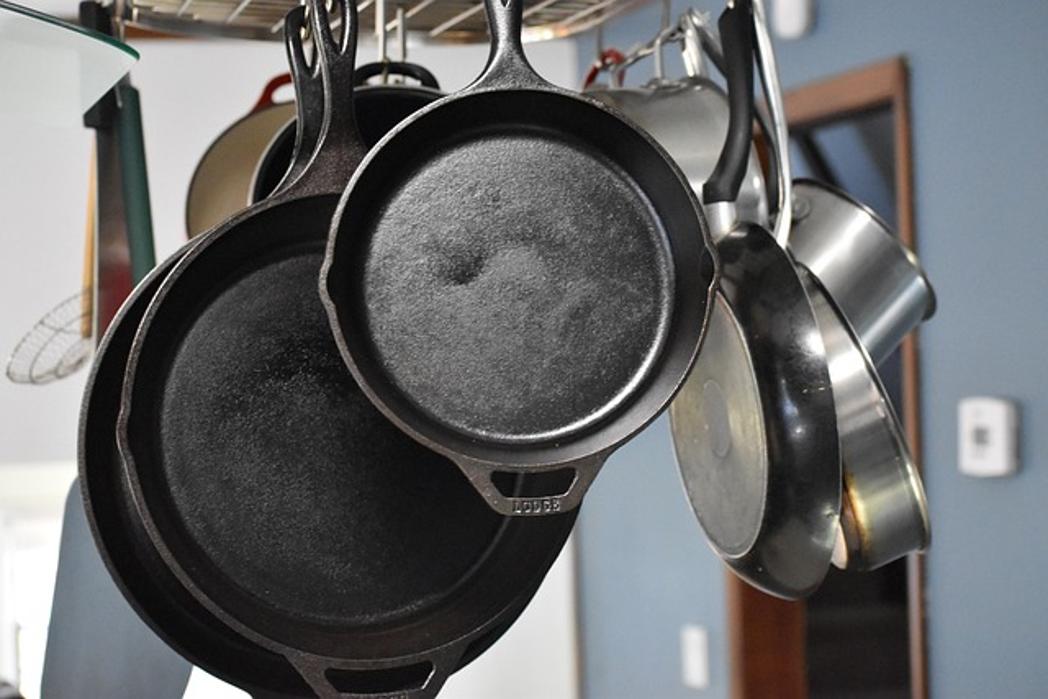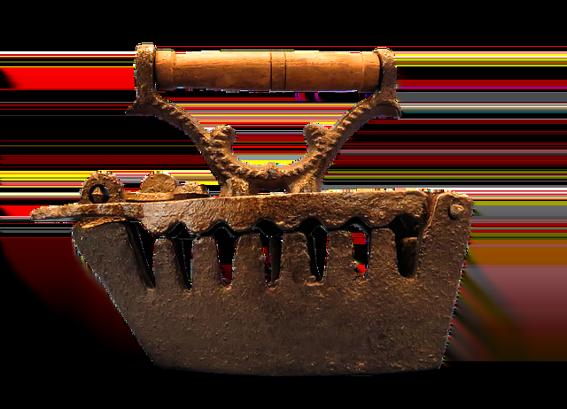Introduction
Cooking with cast iron offers unparalleled benefits that set it apart from other cookware. Its unique properties—including even heat distribution and excellent heat retention—make it a favorite among chefs and home cooks alike. Whether you’re a cooking novice or a seasoned chef, mastering cast iron can elevate your culinary skills to new heights. This guide will walk you through everything you need to know about cooking with cast iron, from seasoning to essential techniques and delicious recipes.

Why Choose Cast Iron Cookware?
Cast iron cookware is renowned for its durability and versatility. Unlike other types of cookware, cast iron improves with age, forming a natural non-stick surface as it is seasoned over time. This makes it perfect for a wide variety of cooking methods, including searing, frying, baking, and roasting. Additionally, cast iron is free from harmful chemicals often found in non-stick coatings, providing a healthier option for your kitchen.
The economic value of cast iron cookware is also significant. A well-maintained cast iron pan can last for generations, making it a worthwhile investment. Furthermore, its compatibility with various heat sources, from stovetops to ovens and even campfires, adds to its versatility.
With its ability to handle high temperatures and distribute heat evenly, cast iron cookware is an excellent choice for achieving perfect results each time you cook. Whether you are preparing a delicate sauce or a robust steak, cast iron ensures consistent and delicious outcomes.
Seasoning Your Cast Iron Frying Pan
What is Seasoning?
Seasoning is the process of creating a protective layer on the surface of cast iron by heating oil until it polymerizes and bonds to the metal. This layer not only makes the pan non-stick but also helps prevent rust. A properly seasoned cast iron pan becomes an indispensable tool in your kitchen.
Step-by-Step Guide to Seasoning
- Clean the Pan: Wash your new cast iron pan with warm, soapy water to remove any factory residue. Dry it thoroughly.
- Apply Oil: Using a paper towel, apply a thin layer of vegetable oil or melted shortening to the entire surface of the pan, including the handle.
- Bake the Pan: Place the pan upside down in an oven preheated to 375°F (190°C). Bake for one hour. It’s a good idea to place aluminum foil on the lower rack to catch any oil drips.
- Cool Down: Turn off the oven and let the pan cool completely inside the oven. This cooling process allows the seasoning to set properly.
Maintenance Tips for Seasoning
- Avoid using soap when cleaning your seasoned cast iron pan to maintain its non-stick properties.
- If food sticks to the pan, simply scrub it with coarse salt and a paper towel.
- Reapply a layer of oil and heat the pan periodically to maintain the seasoning.
Essential Cooking Techniques
To make the most of your cast iron cookware, mastering some essential cooking techniques is crucial.
Searing and Browning
Searing and browning are perfect for meat and vegetables. Heat your cast iron pan until it’s smoking hot, then add oil and place your food in the pan. The high heat ensures a flavorful crust forms quickly, locking in juices and flavors.
Baking and Roasting
Cast iron’s excellent heat retention makes it an ideal choice for baking bread, cakes, and pies, and roasting meats and vegetables. Preheat the pan in the oven before adding your ingredients to ensure even cooking.
Frying and Sauteing
For frying and sauteing, cast iron excels because it maintains even temperatures. Whether making scrambled eggs or a stir-fry, the consistent heat ensures perfect results. Add a little oil to the heated pan and cook your ingredients, stirring frequently to prevent sticking.
Delicious Recipes to Try
With the basic techniques mastered, here are some mouth-watering recipes to try with your cast iron pan.
Cast Iron Skillet Steak
- Ingredients: Ribeye steak, salt, pepper, olive oil, garlic, rosemary.
- Instructions:
- Preheat the skillet until it’s smoking hot.
- Season the steak with salt and pepper.
- Add olive oil to the pan and sear the steak for 2-3 minutes on each side.
- Reduce the heat and add garlic and rosemary for added flavor.
- Cook until the desired doneness is reached, then let the steak rest before serving.
Vegetable Stir-Fry
- Ingredients: Assorted vegetables (such as bell peppers, broccoli, carrots), soy sauce, garlic, ginger, olive oil.
- Instructions:
- Heat the skillet and add olive oil.
- Add minced garlic and ginger, sauté until fragrant.
- Add your vegetables and stir-fry until tender-crisp.
- Drizzle soy sauce over the vegetables and toss to coat.
- Serve hot with rice or noodles.
Classic Fried Chicken
- Ingredients: Chicken pieces, buttermilk, flour, salt, pepper, paprika, vegetable oil.
- Instructions:
- Soak the chicken in buttermilk for several hours or overnight.
- Mix flour, salt, pepper, and paprika in a bowl.
- Dredge the chicken pieces in the flour mixture.
- Heat the skillet with vegetable oil and fry the chicken until golden brown and cooked through.

Caring for Your Cast Iron Frying Pan
Proper care is vital to ensure the longevity and performance of your cast iron cookware.
Cleaning Tips
- Avoid Soap: Clean your cast iron pan with water and a stiff brush. If necessary, use coarse salt to scrub tough spots.
- Dry Immediately: Dry the pan completely after washing to prevent rust.
- Heat to Dry: Place the pan on a stovetop over low heat to evaporate any remaining moisture.
Avoiding Rust
- Keep it Dry: Moisture is the enemy of cast iron. Make sure to dry your pan thoroughly after each use.
- Apply Oil: After drying, apply a light layer of oil to the entire surface of the pan to create a moisture barrier.
Proper Storage
- Store Dry: Store your cast iron pan in a dry place.
- Use Protectors: Place a paper towel or cloth between stacked pans to absorb moisture and prevent scratches.

Conclusion
Mastering the art of cooking with cast iron opens up a world of culinary possibilities. From seasoning and maintaining your pan to employing essential cooking techniques, cast iron can transform your cooking. Experiment with the recipes provided and enjoy the many benefits that come with using this versatile and durable cookware.
Frequently Asked Questions
How often should I season my cast iron frying pan?
It depends on usage, but seasoning your cast iron every few months should maintain its non-stick surface. If you notice food sticking, it may be time to reseason.
Can I use soap to clean my cast iron pan?
While occasional use of mild soap is okay, it’s best to avoid soap to protect the seasoning. Use hot water and a brush instead.
What do I do if my cast iron pan gets rusty?
If rust appears, scrub it off with steel wool, rinse, and dry. Reseason the pan by applying oil and heating it in the oven.
